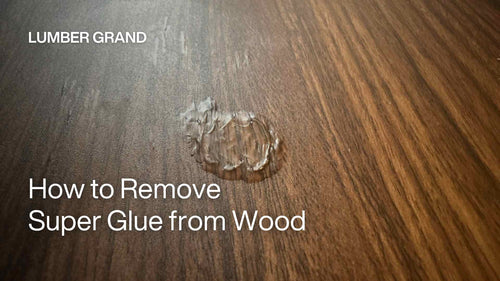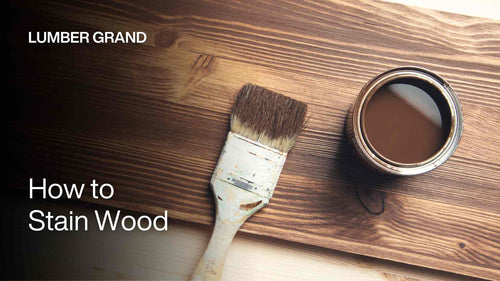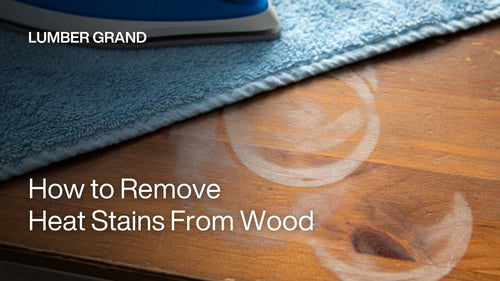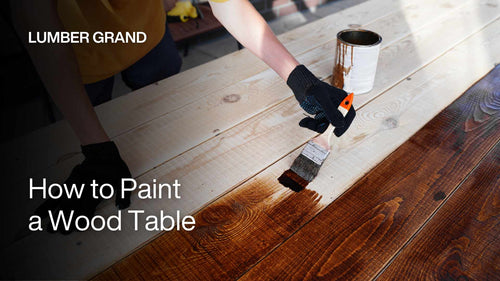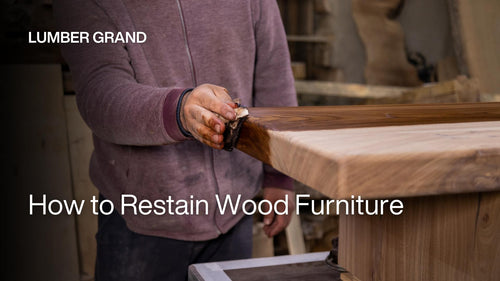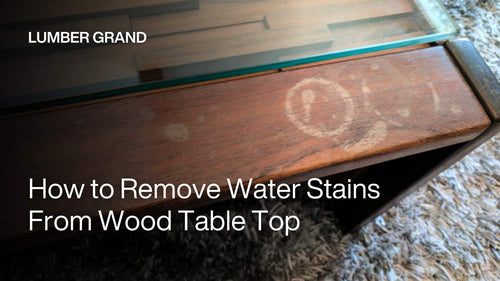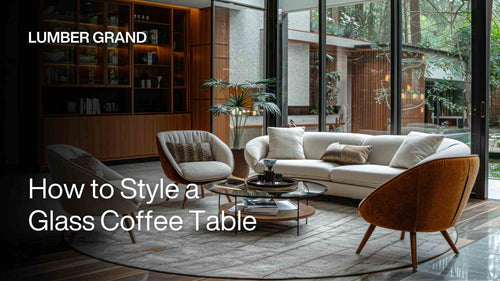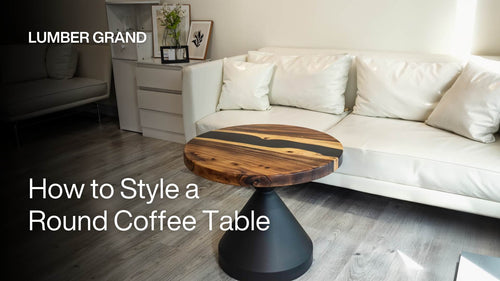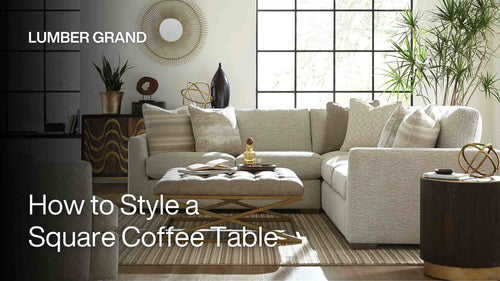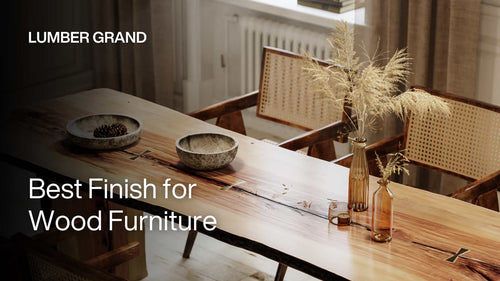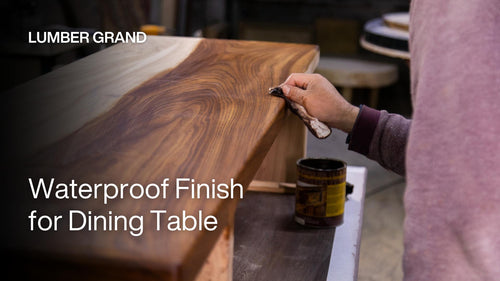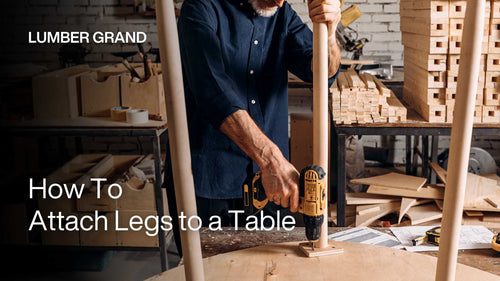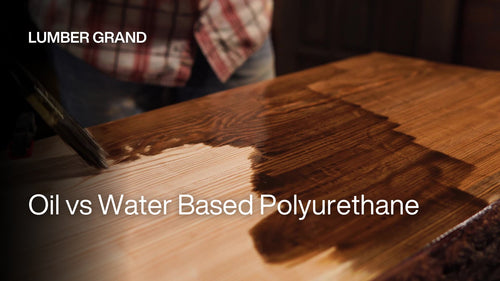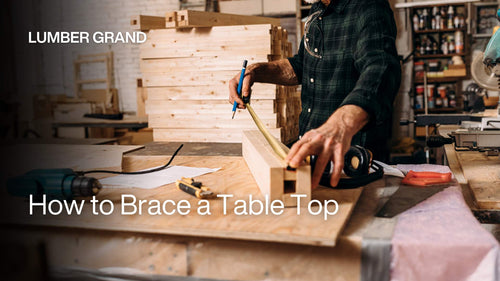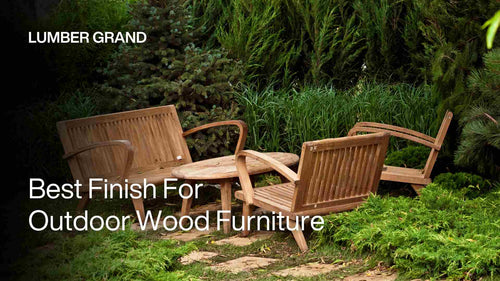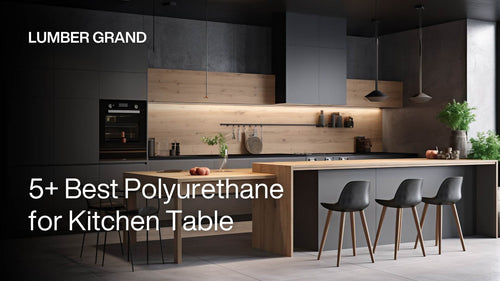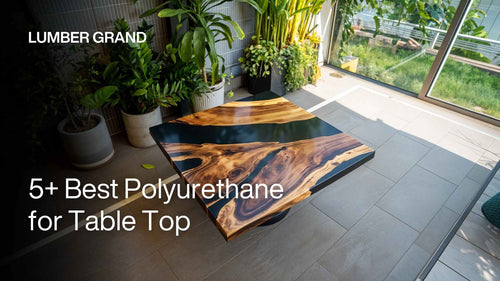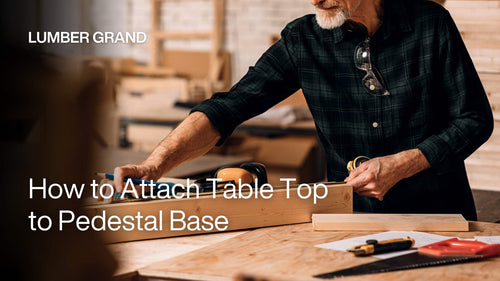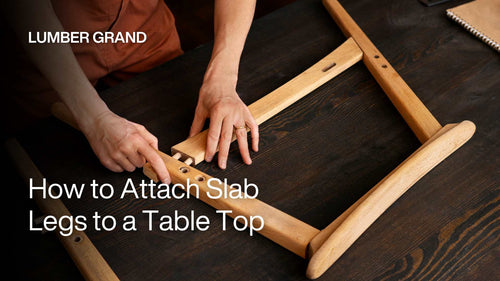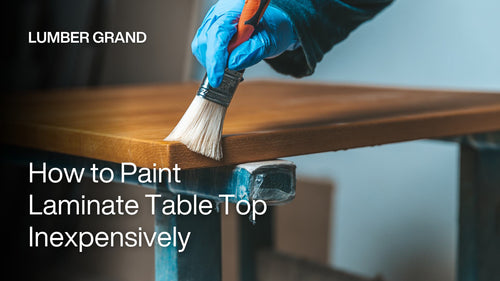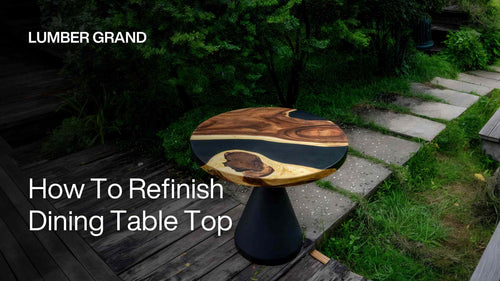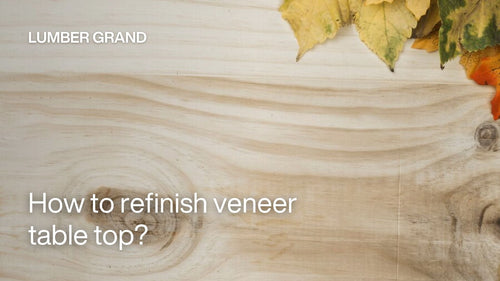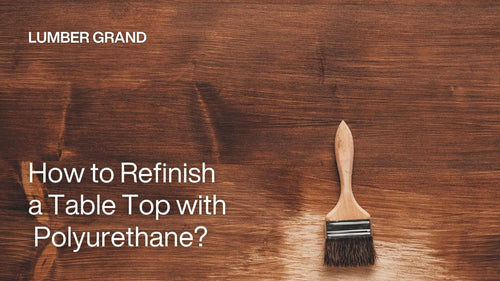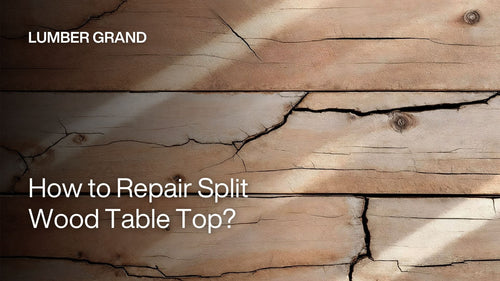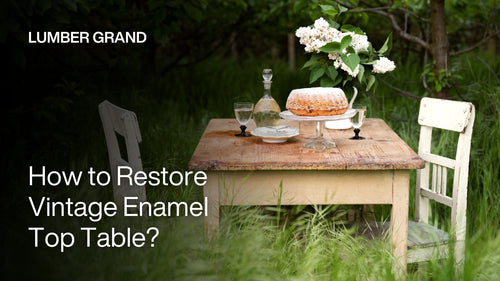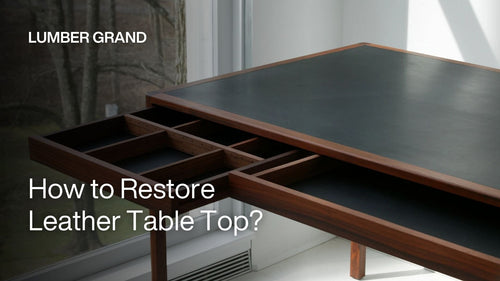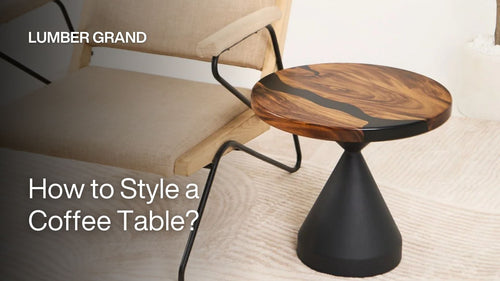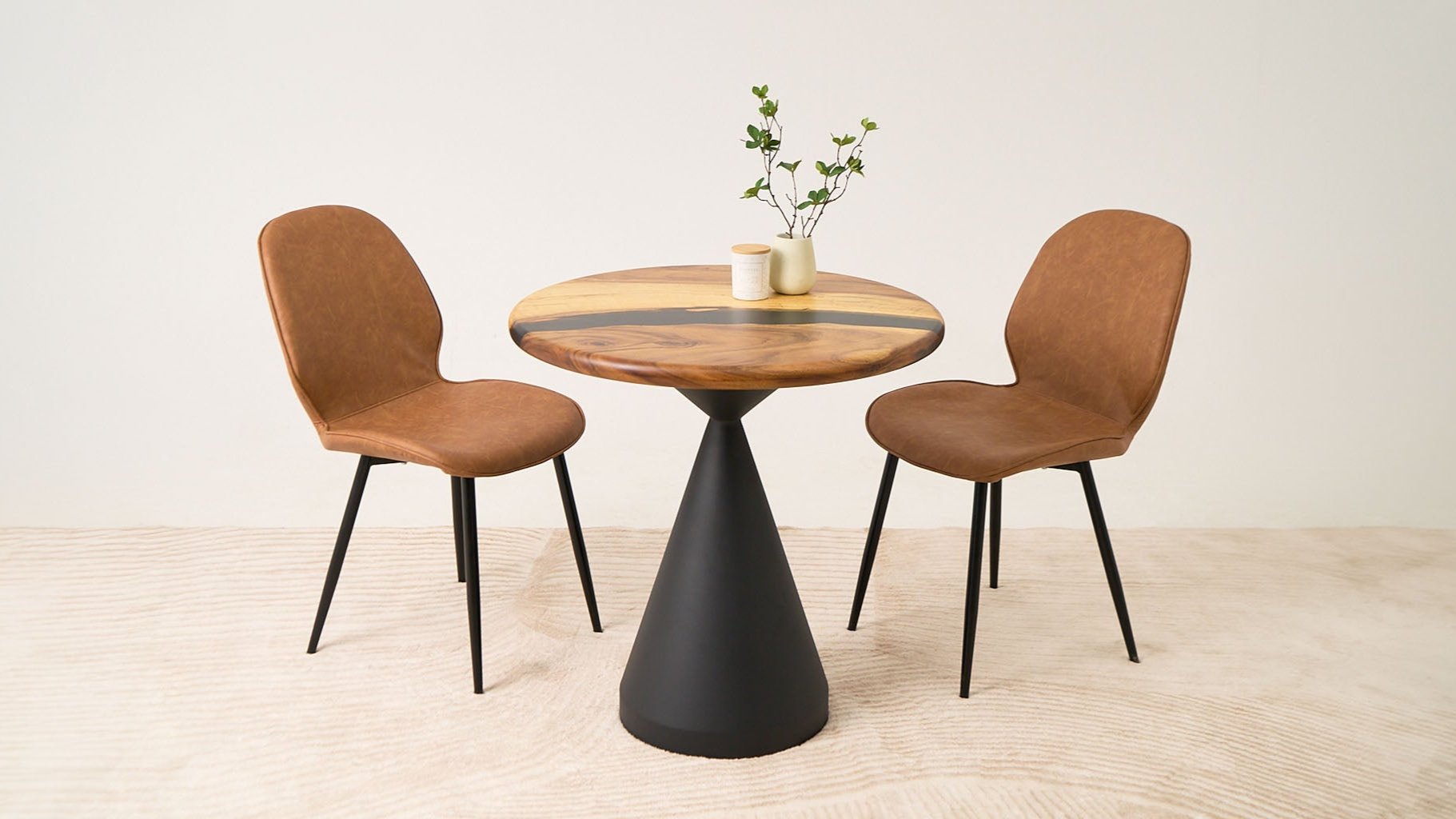How to attach legs to a table? It may sound easy as pie until you're left with a beautiful piece of wood, four legs, and no clue what to do. When you’re making a dining table or swapping in new wood coffee table legs, the way you secure the legs determines everything. It’s strength, beauty, and how your table grows with you.
Lumber Grand will guide you step by step through 6 methods, from humble screw-ins to traditional joinery, so you can be more confident in how to attach legs to a table top. Read more!
How to Attach Legs to a Table: 6 Best Table Leg Attachment Methods
We’ve tried many ways for table leg attachment and finally picked these 6 easy techniques with parts to assemble a leg to table. Let’s see which one works best for your current tables!
1. Threaded Inserts and Bolts: Flexible Table Leg Attachment Methods
Threaded inserts are what the pros use when they want the strongest connection that you can take apart and put back together over and over. They're perfect if you ever need to move your table or store it somewhere.
You screw a small metal tube into your table top, then attach the leg with a bolt that screws right into that tube. This process creates a really strong connection that can handle a lot of weight and won't get loose or stripped out. Even if you take the legs off and put them back on many times.
If you're wondering how to attach legs to a table DIY, this method gives you something that's just as strong and professional-looking as store-bought furniture.

Threaded inserts and bolts hold strong and let you remove legs anytime
Photo: Flowyline
Technical specifications:
-
Standard sizes: 1/4"-20, 5/16"-18, or 3/8"-16 internal threads
-
Installation depth: Minimum 13/16" deep, preferably 1" or more
-
Drill bit size: Follow manufacturer specifications exactly (typically 11/16" for standard inserts)
-
Material options: Steel (recommended), stainless steel, or brass
Best applications:
-
Heavy epoxy tables and conference tables require maximum strength
-
Knockdown furniture that needs frequent disassembly
-
High-end cabinetry where hidden hardware is essential
-
Commercial furniture subject to heavy use
-
How to attach legs to a table with bolts where traditional joinery isn't possible
-
Repairs of stripped screw holes in existing furniture
Read more: How to Attach Metal Legs to a Wood Table Top
2. Metal Plates (Surface Plates): Quick Method for DIY Attaching Legs to a Table
The quick yet effective way to put legs on your table is with small metal plates. These flat pieces screw right into the bottom of your table top. Then you just twist the legs into the metal plates using those 5/16" exposed threads, which they screw right in like a big bolt. It's actually pretty simple once you see how it works.
Furthermore, if your legs have hanger bolts pre-installed, surface plates make it a snap. What we love is that you don't require special tools or advanced woodworking knowledge. So, they're perfect for beginners and weekend projects.

Metal plates create a strong and stable connection with minimal effort
Photo: Freepik
Best applications:
-
Small to medium tables without aprons
-
Mid-Century Modern designs with straight or angled legs
-
Lightweight furniture like epoxy coffee tables, end tables, or desk with wooden desk legs under 25"
-
Temporary or portable furniture that needs easy disassembly
-
Tables with solid or dense wood bases for secure screw attachment
Quick tips:
-
If you’re using angled plates, please make sure they match your leg slant exactly, especially for mid-century-style angles (typically 8 — 15 degrees).
-
Always drill pilot holes first to avoid cracking the wood
-
For softer woods, you should use slightly smaller pilot holes for better screw grip.
You might like: How To Attach Table Top To Pedestal Base
3. Mounting Blocks: Heavy-Duty Solution for How to Attach Legs on a Table
Mounting blocks are small chunks of solid wood that you attach underneath your table in the corners. They're basically professional table leg mounting hardware that gives you a really strong place to connect your legs. You attach the legs to these blocks using special bolts and metal inserts.
We've tried this on several heavy-duty projects, and it really works well. This method is perfect for tables that need to hold a lot of weight, like dining tables, workbenches, or restaurant furniture that gets used hard every single day.

How to attach legs to a table with mounting blocks
Photo: Freepik
Technical specifications:
-
Standard sizes: 4" x 4" (for legs up to 3.25" wide) or 5.75" x 5.75" (for legs up to 5" wide)
-
Block thickness: 3/4" (will add 3/4" to furniture height)
-
Threading: 5/16" threaded insert pre-installed in center
-
Dining table top thickness or other table tops: Minimum 1" for secure screw engagement
-
Attachment: 4 countersunk pre-drilled holes with included screws
-
Bolt requirements: 3/8" x 2½" hanger bolt with 3/4" exposed threads
-
Wood species: Available in 7 different species to match your project
Best applications:
-
Big dining tables and meeting tables that need to be rock-solid
-
Workbenches and craft tables that get used hard and hold heavy tools
-
Kitchen islands and counters where you can't have wobbly legs
-
Round tables where it's tricky to attach legs in other ways
-
Tables without that support frame underneath, where regular methods don't work
-
Furniture that you need to take apart often for moving or storage
-
Restaurant tables or office furniture that gets used every single day
4. Angled Cleats: Best Method for Mid-Century Modern Leg Styles
Mid-century modern tables have those clean, simple lines with legs that angle out to the sides. You know, that classic 1960s look. So, to get that style without having wobbly legs, we've found that cleats work really well.
These are just thin strips of wood that you attach underneath the table, and they give you a bigger, stronger area to attach those angled legs.
With cleats, you can get the leg spacing exactly right and attach them securely without drilling holes right through your table top or desk top . Besides, they work great for desks and those low cabinets where you need the legs lined up perfectly and balanced just right — both for how it works and how it looks.

Cleats work really well for attaching mid-century modern leg styles to table
Photo: Osborne Wood
Technical specifications:
-
Standard dimensions: 2¾" width × 1⅜" depth (typical profile)
-
Length options: Available in 7 different lengths to match table widths
-
Angle options: Straight cleats or angled cleats (typically 12° for splayed legs)
-
Mounting requirement: Table base must be ¾" thick or more for secure attachment
-
Hardware: Accepts 3/8" hanger bolts with 1" exposed threading
-
Attachment per cleat: Each cleat mounts two table legs (one at each end)
-
Wood species: Available in maple, cherry, white oak, and walnut
Read more: Best Wood for Table Top
Best applications:
-
Mid-century dining tables with angled legs that spread out
-
Modern cabinets and low storage pieces that need to look clean and simple
-
Office desks where the legs need to line up perfectly
-
TV stands and stereo cabinets with angled leg styles
-
Coffee tables and side tables in modern living rooms
-
Custom furniture where you might need to take the legs off sometimes
-
Office or restaurant furniture that needs to look good and be strong
5. Direct Screw Attachment: Simplest How to Attach Legs to a Table
Why is screwing legs directly into the table the simplest way? Because you literally just screw them in. No extra pieces, no support blocks, no measuring out complicated hardware. It's as straightforward as it gets for people doing their projects.
For small stuff like side tables or lightweight desks, this method is quick and gets the job done. But you should know what works well with this approach and what doesn't before you decide if it's right for your table.

Direct screw is the simplest how to attach table legs to a table top
Photo: Freepik
Note: Wood gets bigger when it's humid and smaller when it's dry. So, if you just screw legs straight into the wood without thinking about this, your table top will probably crack and split when the wood tries to move. That's why we usually don't recommend doing this for tables you want to keep for years.
Best applications:
-
Temporary or portable furniture that needs quick assembly
-
Metal legs on plywood (pretty common in professional work)
-
Small side tables or nightstands that don't hold much weight
-
Workshop tables or utility tables where looks don't matter much
-
When you're on a tight budget and want simple over long-lasting
-
Furniture that stays put and doesn't get heavy use
Read more: How to Attach Slab Legs to a Table Top
6. Traditional Mortise and Tenon: Skilled Table Leg Attachment Methods
The mortise and tenon method has been around forever — we're talking thousands of years, from ancient Egyptian furniture to old European churches. It works like a really precise puzzle piece where one part fits perfectly into another.
-
The leg (or apron) has a shaped piece sticking out called a tenon.
-
The other piece has a matching rectangular hole called a mortise.
You fit the tenon into the mortise, then glue them together for a connection that can last for generations. Sometimes, people add wooden pins or wedges to lock everything in place permanently.
This takes way more work than just screwing things together, but it gives you the strongest possible table with no screws or metal hardware showing at all.

Mortise and Tenon gives you the strongest possible table with no screws or metal hardware
Photo: Wikimedia Commons
Technical specifications:
-
Joint strength: Considered one of the strongest woodworking joints available
-
Standard proportions: Tenon should be 1/3 the thickness of the thinnest material
-
Precision requirement: Tolerances typically within 1/32" for proper fit
-
Glue surface area: Maximum wood-to-wood contact for superior holding power
-
Permanence: Typically cannot be disassembled once glued
Best applications:
-
Big dining tables that need to be rock-solid
-
Heirloom furniture built to last multiple generations
-
Old-style furniture copies where it needs to look authentic
-
High-end custom furniture justifies the labor investment
-
Heavy-duty table bases hold a lot of weight
-
Craftsman-style pieces where you can see the joints, and they look good
-
Workbenches and shop tables handle serious use
What is the Best Way to Attach Legs to a Table?
The best way to attach legs to a table depends on the table type (wood, epoxy, metal), leg style, , and intended use. Before you pick a method, it’s vital to think about a few things:
-
What kind of table are you making?
-
How do you plan to use it?
-
How much weight will this table need to hold?
-
Will you ever need to take it apart to move?
-
How much time do you want to spend on this project?
Most of the time, threaded inserts or good mounting plates will give you a table that's plenty strong and looks professional. Here are the top-rated table leg attachment methods in each case:
|
Your Situation |
Best Methods |
Why Choose This |
Skill Level |
|
Beginner or Short on Time |
Straight screws, metal plates |
|
Beginner |
|
Need Something Really Sturdy |
Threaded inserts & bolts, mounting blocks, cleats |
|
Intermediate |
|
Removable Legs (Moving/Shipping) |
Threaded inserts & bolts, hanger bolts |
|
Intermediate |
|
Premium Heirloom Table |
Mortise and tenon |
|
Advanced |
You might like: How to Attach Metal Legs to a Wood Table Top.
FAQs
1. How to Attach Legs to a Table Without Apron DIY?
To attach legs to a table without apron, you can use metal plates. You can simply screw them to the bottom of your table and twist the legs in. Regarding stronger connections, we recommend using threaded inserts & bolts, or mounting blocks attached to the corners.
2. How to Secure Loose Table Legs?
To secure loose table legs, you’ll need to figure out why they're loose first:
-
Case 1: If the screws are stripped out, you can try longer screws or move the attachment point slightly.
-
Case 2: For really bad damage, you might need to fill the holes with wood glue and sawdust, let it dry, then re-drill.
-
Case 3: Switching to a stronger leg attachment method like threaded inserts.
-
Case 4: Tightening loose bolts or replacing worn hardware often does the trick, too.
3. How to Stabilize Table Legs DIY?
Wobbly legs usually mean the attachment points aren't strong enough or the legs aren't aligned properly. Here is how to stabilize table legs DIY quickly:
-
Step 1: Check that all legs are the same length first, then you can trim or add furniture pads to level things out.
-
Step 2: If the connections are weak, we upgrade to stronger hardware like mounting blocks or threaded inserts.
-
Step 3 (optional): Add cross-braces between the legs to enhance stability for taller tables
For more information, read more at: How to fix a wobbly table
4. How to Attach 4x4 Legs to Table with Hanger Bolts?
To attach 4x4 legs to table with hanger bolts, follow these easy steps:
-
Step 1: Drill a pilot hole into the center of your 4x4 leg, then screw in the wood screw end of the hanger bolt, leaving the machine threads sticking out.
-
Step 2: Attach mounting plates to your table bottom where you want the legs.
-
Step 3: Screw the exposed bolt threads into the plates

Attaching 4x4 legs to table
Photo: Lumber Grand
5. Which Joint is Commonly Used for Joining Legs to Tables and Chairs?
The mortise and tenon joint is the most common traditional method for joining legs to tables and chairs. It's been the go-to choice for furniture makers for thousands of years because it creates such a strong, lasting connection. The leg has a shaped piece (tenon) that fits perfectly into a matching hole (mortise) in the table or chair frame.
How to Attach Legs to a Table: Guide Ends Here
Now you’ve seen 6 different ways to attach table legs, including simple screw-on plates and strong joints like mortise and tenon. In short, our advice on how to attach legs to table top:
-
Use straight screws and metal plates for quick setups.
-
Choose cleats or mounting blocks for extra strength and stability.
-
Go with hanger bolts or threaded inserts if you need removable legs.
-
Choose mortise and tenon for heirloom-quality durability.
No matter your style or skill level, knowing how to attach legs to a table gives you the freedom to build something that lasts and looks beautiful. Want more tips on table design, wood types, and finishes? Explore more guides on the Lumber Grand blog.









